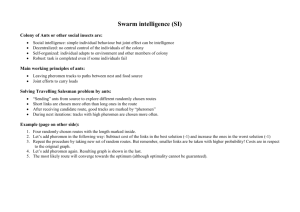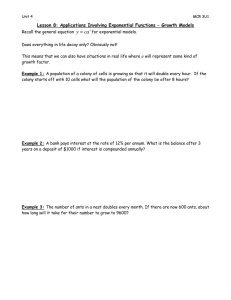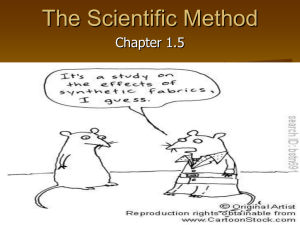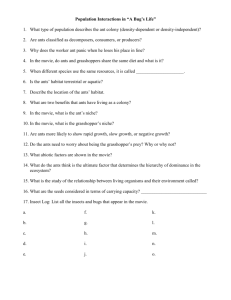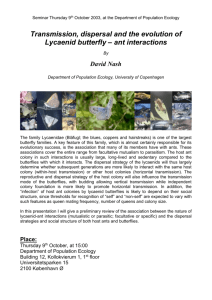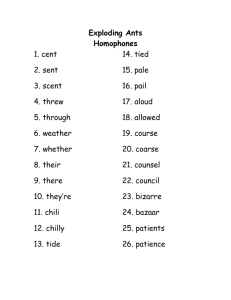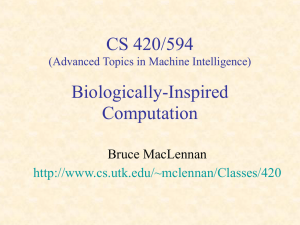MATH 1030: Homework 8
advertisement
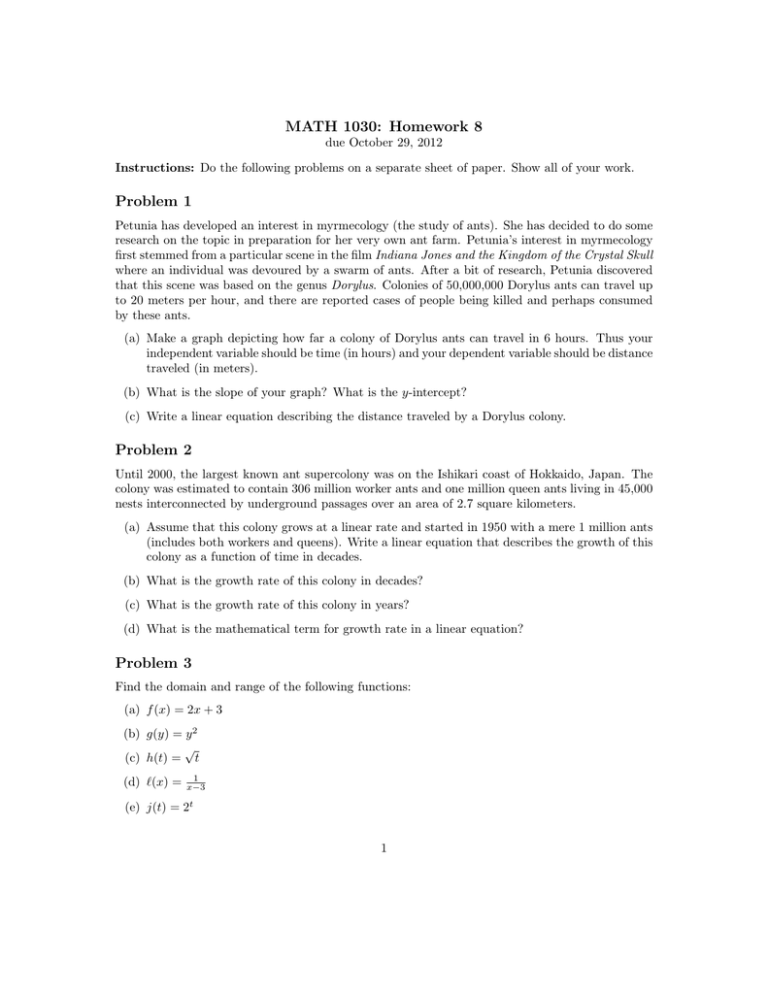
MATH 1030: Homework 8 due October 29, 2012 Instructions: Do the following problems on a separate sheet of paper. Show all of your work. Problem 1 Petunia has developed an interest in myrmecology (the study of ants). She has decided to do some research on the topic in preparation for her very own ant farm. Petunia’s interest in myrmecology first stemmed from a particular scene in the film Indiana Jones and the Kingdom of the Crystal Skull where an individual was devoured by a swarm of ants. After a bit of research, Petunia discovered that this scene was based on the genus Dorylus. Colonies of 50,000,000 Dorylus ants can travel up to 20 meters per hour, and there are reported cases of people being killed and perhaps consumed by these ants. (a) Make a graph depicting how far a colony of Dorylus ants can travel in 6 hours. Thus your independent variable should be time (in hours) and your dependent variable should be distance traveled (in meters). (b) What is the slope of your graph? What is the y-intercept? (c) Write a linear equation describing the distance traveled by a Dorylus colony. Problem 2 Until 2000, the largest known ant supercolony was on the Ishikari coast of Hokkaido, Japan. The colony was estimated to contain 306 million worker ants and one million queen ants living in 45,000 nests interconnected by underground passages over an area of 2.7 square kilometers. (a) Assume that this colony grows at a linear rate and started in 1950 with a mere 1 million ants (includes both workers and queens). Write a linear equation that describes the growth of this colony as a function of time in decades. (b) What is the growth rate of this colony in decades? (c) What is the growth rate of this colony in years? (d) What is the mathematical term for growth rate in a linear equation? Problem 3 Find the domain and range of the following functions: (a) f (x) = 2x + 3 (b) g(y) = y 2 √ (c) h(t) = t (d) `(x) = 1 x−3 (e) j(t) = 2t 1 Problem 4 Determine whether the following situations represent linear growth/decay or exponential growth/decay and then answer the question. (a) Timmy buys 5 new Pokemon cards per day. If he had 212 cards one week ago, how many does he have now? (b) Carbon-14 has a half-life of 5730 years. That means the the amount of Carbon-14 in an object is cut in half ever 5730 years. If a skeleton has 80% of its original Carbon-14 now, what percent will remain 17,190 years from now? (c) Hang-glider prices are increasing by 4% per month. If hang-gliders cost $2, 200 today, how much will they cost 4 months from now? 2

